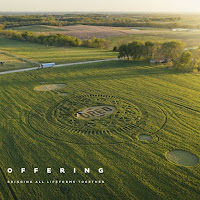I caught up with an old friend today in an assisted care facility for the first time in more than a year. Due to COVID non-emergency
visitations for non-family members were forbidden until recently and were
difficult to arrange until the past several weeks. Even now visits must be scheduled in advance on limited days in limited time windows. Uncertainties in my own
schedule ruled out visits until today. The fellow has Parkinson’s at a severe
enough stage that he needs this level of assistance, but is otherwise healthy.
Because of the other residents and staff he has not been entirely isolated, but
he has been separated from friends and family for long stretches. It hasn’t
been a fun year. It was good to catch up though it is always somehow surprising
on a non-conscious level to notice that someone one knew as a youth is a few
courses past his salad days – if I didn’t know better, I’d suspect I was aging
a bit myself. We’ve been friends for more than 20 years but I’ve known him for
55 because he was part of my sister’s regular posse in high school. They never
dated, but they hung out. It was only when I left at the end of the visit
(limited to 30 minutes under current rules) that reflecting on this reminded me
of the date. Today is my sister’s birthday.
Sharon (1950-1995) was 2 years and 5
months older than I, which is a huge difference in the childhood years and significant
up through one’s teens – not so much afterward. Her arrival was fortuitously
timed for my dad. North Korea invaded South Korea on June 25 (24 this side of
the date line) 1950. He was in the Naval Reserve and under the selective
service rules of the day he would have been recalled to active duty were he not
a father. This was fortuitous for me, too, since… well… had he been recalled I
wouldn’t be here at all.
Siblings play a major part in one’s own
identity formation. (For an only child the lack of a sibling is a major part of identity.)
A part of how we think of ourselves is always so-and-so’s older/younger brother
or sister. Even if we hate a sib (some do), that, too, helps define us. There
is an entire field of psychology dedicated to the subject, which is too complex
to summarize in a few hundred words here, but I’d recommend Sibling Identity and Relationships (pic
below) for those interested in an in-depth elucidation. Suffice to say for the
purposes of this blog that though she’s been gone 26 years (and I’m on the
dessert course with only the after dinner drink to follow), a part of me is
still Sharon’s little brother.
Sharon and I got along fine most of the
time. As a tween and teen she definitely helped my awareness of 60s culture in
part just by being older and in part because she confidently swam in it when by
myself I might have just dipped in a toe. Sharon was the poet of the family and
I posted 100 of her poems online at Echoes of the Boom.
They are worth a read. In my intro to them I wrote, “Sharon always was in sync
with the times. She was a fine hippie in the Summer of Love, she discoed in the
70s, and she could out-yuppie Michael J. Fox in the Reagan years. There is much
to be said for being in step, or at least so it seems to those of us whose
footfalls are never quite right.” She did things in the right order: a wild child
when young (to the point that it is still inappropriate for me to recount my
best stories of her in a public forum like this) trending to a conservative
lifestyle when older. (I did it the other way around, which had unfortunate consequences.)
 |
| 1971 |
Older-sister/younger-brother is probably
the least likely combination and birth order to promote sibling rivalry (at
least in the absence of others sibs) but of course there is always some. I only
wish there were more decades of it than there were.
Pup – Sibling Rivalry





